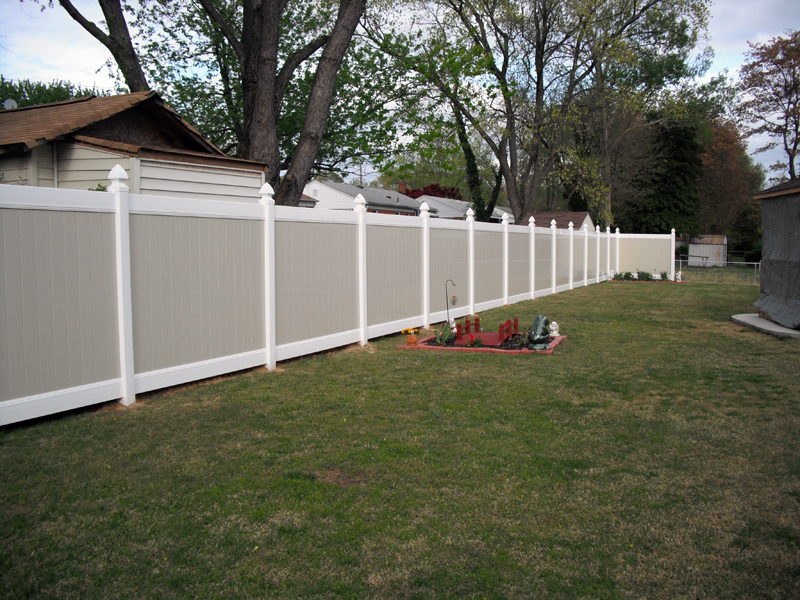Nothing quite compares to the feeling of personalizing your own little slice of heaven with a beautifully constructed fence. Whether you're looking to secure your backyard haven or enhance the property’s curb appeal, a sturdy, good-looking fence is often at the top of a homeowner's wish list.
But before you rush to grab your toolbox and embark on this DIY adventure, it's essential to balance cost and quality. After all, scrimping on materials might save you a few dollars initially, but investing in the appropriate fencing for your needs can save you a fortune in the long run. Why, you ask? Simple, if your fence material isn’t up to par, it could be stressed beyond its limits, leading to premature wear.
Accurate Measurements Save You Time and Stress
Now that we've set the stage, let's talk about the cornerstone of any successful DIY fence installation: planning. It's true what they say, failing to plan is planning to fail. Proper planning not only saves you money but also ensures a smooth and efficient installation process.
First things first, accurate measurements are key. The size of the lot you're planning to fence in is the biggest variable in this equation. Be cautious not to overestimate; otherwise, you may end up with excess materials and wasted cash. That said, it's wise to order a couple of extra fence panels just in case. Mistakes happen, and if you happen to misjudge a cut or badly botch a panel installation, having those backup panels can save you from the headache of ordering more panels, incurring additional shipping costs, and prolonging your project.
Once you have your measurements locked in, it's time to get acquainted with your local building codes. This might not be the most glamorous part of your DIY fence journey, but trust us – it's absolutely essential. Researching and adhering to local regulations can help you avoid fines, penalties, and the heartache of having to redo your entire project. Here's how:
- Avoid fines or penalties: No one wants to cough up hard-earned cash for something that could have been easily avoided. By following your local building codes, you'll steer clear of any unwanted financial setbacks.
- Call 811: The national 811 call-before-you-dig phone line can tell you if your project will run afoul of any underground utility lines and let you know if you’re allowed to put a fence in the area. You may need to adjust your measurements based on the information.
- Save time and resources: By staying in compliance with your local regulations, you won't have to worry about tearing down and rebuilding your fence.
- Pool fences demand extra attention: If you're fencing in a pool, it's crucial to be extra diligent when following the rules. Pool code violations are not taken lightly, and local authorities will not let you slide. So, make sure your pool fence meets all the necessary requirements to avoid potential fines or safety hazards.
By meticulously planning your DIY fence installation and staying in line with local regulations, you'll save money and have a sturdy, beautiful fence that stands the test of time.
Gathering the Right Materials
Now that you've planned your project and familiarized yourself with local regulations, let's move on to the next critical component of a successful DIY fence installation: the proper tools.
As the saying goes, time is money, and having the right tools for the job can save you both.
- Auger: An auger is a valuable tool for digging post holes with precision and ease. The big question is, should you buy one or rent one? To make the most cost-effective decision, consider the duration of your project and the availability of rental options in your area. If you can rent by the hour, day, or weekend, you might save a considerable amount of money compared to purchasing a brand-new auger. Plus, you won't have to worry about storing the equipment once your project is complete.
- Level: A level is crucial for ensuring that your fence posts are perfectly straight and even. Investing in a high-quality leveler will save you time and frustration.
- Yarn or chalk twine for proper measurement: When it comes to marking out your fence line, you'll need a reliable method for keeping your measurements straight. Yarn or chalk twine can be used to mark the ground, but if you're building around a pool patio or into a hardscape, it's worth springing for the chalk twine. The added visibility and durability will make your life easier and help ensure a precise installation.
Maintenance and Upkeep after Installation
Just like any other aspect of your home, your vinyl fence or aluminum fence requires regular care and attention to keep it looking its best. By prioritizing maintenance, you'll help extend the lifespan of your fence, ultimately saving you money in the long run.
Regular upkeep can also help prevent small issues from becoming big, expensive problems. One of the best ways to save money on fence upkeep is to handle routine tasks yourself. Simple tasks like cleaning can be easily tackled by most DIYers.


